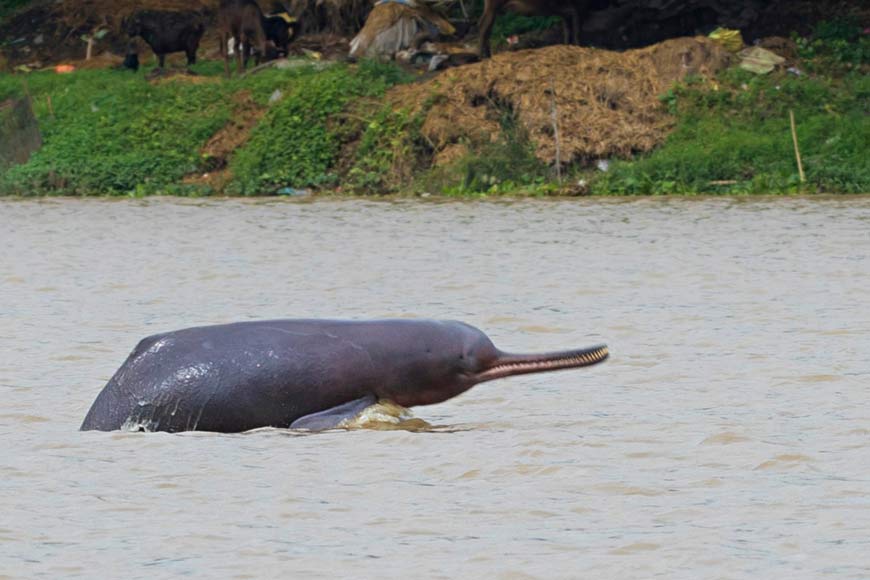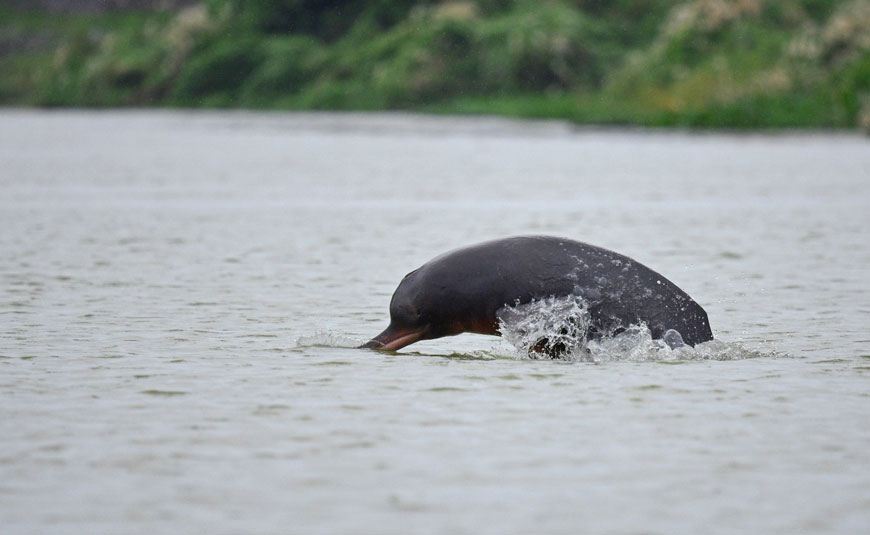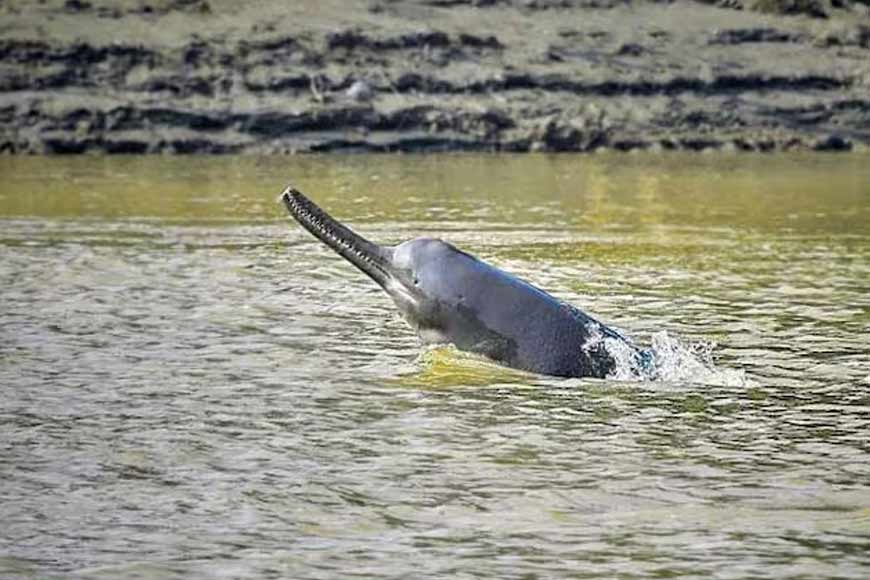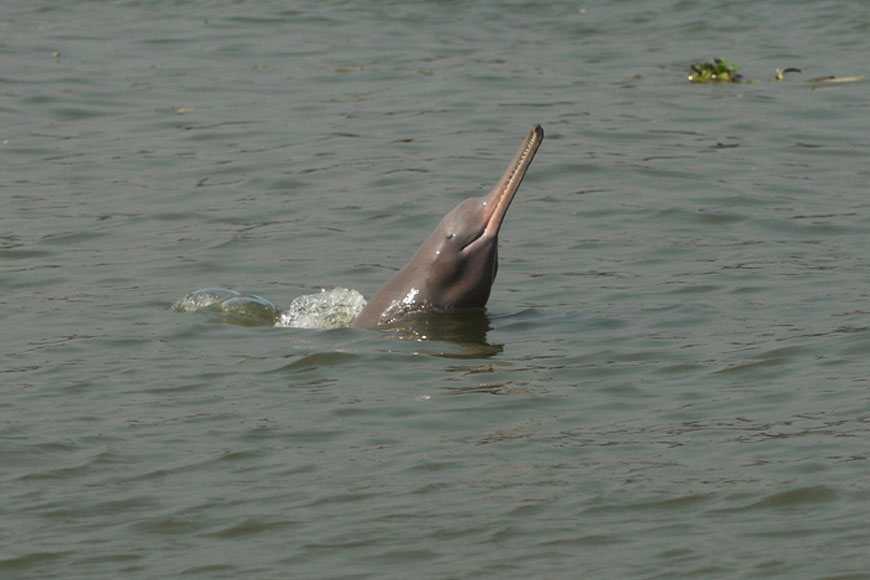“Dolphin Mitra” to be launched in Bengal to save Gangetic Dolphins – GetBengal story

Day after day we are getting bad news about nature and its creatures. Due to man made disasters and wastes left behind, many animals are endangered today and unfortunately, are also getting extinct. The national aquatic animal of India, dolphin, is one such animal facing the risk of extinction. The Government of India declared the Dolphin as the national aquatic animal in 2009.
Dolphins play several important roles in the ecosystem, primarily in marine ecosystems. Dolphins are apex predators in many marine food chains. They help regulate populations of their prey species, ensuring a balanced ecosystem. Dolphins can serve as indicators of the overall health of marine environments. Their presence and behaviour can reflect the abundance and distribution of prey species and the quality of their habitat. Studying dolphins can provide valuable insights into the state of marine ecosystems and help monitor the impacts of environmental changes. Despite all their contribution to maintaining the ecological balance, human “development” is posing a big-time threat to their survival.
 Dolphin - National aquatic animal of India
Dolphin - National aquatic animal of India
There are many reasons why the dolphins are being killed and most of the causes point towards the carelessness and ignorance of humans. The Gangetic River dolphin often seen along the coastlines of West Bengal, lives in one of the most populated places on earth. These cetaceans hunt for fish, but so do most people living along the banks of the mighty rivers. Dolphins get caught in the fishing nets thus and get killed. They are called ‘bycatch’, a by-product of the catch. Unlike fish, who breathe through gills, dolphins breathe air using lungs. Dolphins must make frequent trips to the surface of the water to catch a breath and when they do, they get caught up in nets. In some regions, people kill dolphins on purpose to eat them and use their oil. This is a cowardly and barbaric practice, since there’s plenty of other food available. The Ganga basin is heavily industrialised. According to the World Wildlife Foundation (World Wildlife Foundation), each year about 9,000 tons of pesticides and 6 million tons of fertilizers are used and dumped into the river. Dolphins simply die of pollution at times. More than 50 dams and other irrigation / hydel projects are crowded into the Ganga basin. The dolphins trapped in dam waters are easy prey to poachers, while baby dolphins also survive less near the dams. River traffic kills dolphins too.
The Gangetic River dolphin can only live in freshwater, and has ultrasound vision. Given their poor eyesight and the muddy water around, they bump into boats easily. Dolphins give birth to only one cub at a time, that too at a gap of 2 or 3 years. This beautiful, harmless and environmentally helpful mammal is a victim of human development which is gradually turning our environment into an almost uninhabitable place.
 West Bengal Forest Department to launch the Dolphin Mitra scheme for conservation of Gangetic Dolphins
West Bengal Forest Department to launch the Dolphin Mitra scheme for conservation of Gangetic Dolphins
The State Forest Department is taking initiatives to protect the dolphin population in the Ganges. A high-level meeting was held in Burdwan recently with officials from 9 districts. In the meeting the issue of protecting the dolphins and their importance was discussed. There has also been a preliminary round of discussion on how the dolphins need to be protected.
There have been frequent sightings of dolphin from Murshidabad to Nadia, East Burdwan and Hooghly. Here too dolphins are dying. Hence to save the dolphins and stop them from dying, the officials of the Forest Department are trying to make the residents living along the riverside aware of the circumstance.
For the conservation of the Gangetic dolphins a project called “Dolphin Mitra” will be launched. From the next financial year, special initiatives have been planned to conserve the Gangetic dolphin and some other important animals. The meeting was organised with the forest department officials from 9 districts in the distance education building of Burdwan University.

The meeting was attended by Soumitra Dasgupta, the Head of Forest Department (HFO) and other forest officers of various districts. Officials of East and West Burdwan, Malda, East and West Medinipur, North 24 Parganas, South 24 Parganas, Murshidabad, Nadia districts were present in that meeting. They discussed the conservation of dolphins and other aquatic animals such as Gharials, porpoises and others that keep our ecosystem in check.
The local people and the fisherfolk will be used for the conservation of Dolphins. They will be trained and made aware of what to do. Besides that, initiatives will be taken for the counting of dolphins and to clean water.
An official of the forest department said, “Important decisions were taken in the meeting with regard to the problems that are killing the Gangetic dolphins. Necessary steps will be taken to conserve and protect our national aquatic animal. The beauty of the Ganges cannot be compromised as dolphins help a lot in keeping the waters clean.”










